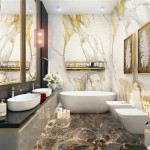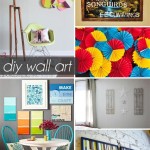Teal Accent Home Decor: Injecting Serenity and Sophistication
Teal, a captivating hue blending the calming influence of blue with the invigorating energy of green, has steadily risen in popularity within the realm of interior design. This versatile color transcends fleeting trends, offering a timeless appeal that can seamlessly integrate into a wide spectrum of decorating styles. Its ability to evoke feelings of tranquility, sophistication, and even a touch of luxury makes it an ideal choice for accentuating various areas within the home. Incorporating teal effectively requires understanding its nuances, exploring its compatibility with other colors, and strategically placing teal elements to achieve the desired aesthetic impact.
The appeal of teal stems from its inherent balance. It’s neither overtly cool nor overly warm, granting it a remarkable adaptability. This allows teal to function as a bridge between different color palettes, harmonizing seemingly disparate elements within a room. For instance, teal can soften the starkness of a predominantly white or gray space, adding a subtle yet noticeable layer of visual interest. Conversely, it can temper the intensity of bolder colors like mustard yellow or coral, preventing the overall scheme from feeling overwhelming.
Teal's versatility also extends to its ability to complement a wide array of architectural styles. Whether the home boasts a minimalist, modern aesthetic or leans towards a more traditional, rustic charm, teal can be incorporated with finesse. In modern spaces, clean lines and simple forms can be enhanced by teal accents, creating a sense of sophisticated calm. In more traditional settings, teal can add a touch of contemporary flair without disrupting the overall character of the room. The key lies in judicious selection of teal shades and textures, ensuring they resonate with the existing design elements.
Understanding the Spectrum of Teal
The term "teal" encompasses a broad spectrum of shades, ranging from lighter, more pastel-like variations to deep, saturated hues that border on turquoise or even dark green. Recognizing these subtle differences is crucial when selecting the appropriate teal for a specific space. Lighter teals, for example, are often preferred in smaller rooms or areas with limited natural light, as they tend to reflect light and create an illusion of spaciousness. These softer shades work particularly well in bedrooms or bathrooms, promoting a sense of relaxation and tranquility.
On the other hand, deeper, more saturated teals can make a bolder statement in larger rooms with ample natural light. These richer hues can add depth and drama to living rooms, dining rooms, or even home offices. They pair particularly well with metallic accents like gold or brass, creating a sense of opulence and sophistication. However, it's important to use these darker teals sparingly, as overusing them can potentially make a room feel smaller and darker.
Furthermore, the undertones within a particular teal shade can significantly impact its overall effect. Some teals may lean slightly more towards blue, while others may have a more pronounced green undertone. Identifying these nuances allows for a more informed decision when pairing teal with other colors. For example, a teal with a strong blue undertone might complement cooler colors like silver or gray, while a teal with a green undertone might pair better with warmer colors like terracotta or beige.
Strategic Placement of Teal Accents
The successful integration of teal accent decor hinges on the strategic placement of these elements within the home. Rather than simply scattering teal items haphazardly throughout a room, it's important to create a cohesive and balanced design. This involves considering the overall layout of the space, identifying focal points, and using teal to draw the eye and create visual interest.
One effective strategy is to use teal to accentuate architectural features. For instance, painting a single accent wall in a teal shade can instantly transform a room, highlighting its shape and dimensions. This is particularly effective in rooms with interesting architectural details, such as a fireplace, a bay window, or built-in shelving. The teal accent wall serves as a backdrop, drawing attention to these features and creating a sense of depth and character.
Another approach is to incorporate teal through furniture and textiles. A teal sofa, armchair, or ottoman can serve as a statement piece in a living room, adding a pop of color and visual interest. Similarly, teal curtains, rugs, or throw pillows can be used to create a cohesive color scheme, tying together different elements within the room. These softer accents offer a more subtle way to incorporate teal, allowing for greater flexibility and experimentation.
Furthermore, teal can be introduced through smaller decorative items, such as vases, artwork, or lamps. These accents can be strategically placed throughout the room to create a sense of harmony and balance. For example, a collection of teal vases on a bookshelf or a teal-framed piece of artwork on a wall can subtly reinforce the color scheme, adding a touch of sophistication and personality to the space.
Color Combinations that Complement Teal
The beauty of teal lies not only in its inherent charm but also in its ability to complement a wide range of other colors. Understanding which colors pair well with teal is crucial for creating a harmonious and visually appealing interior. Several color combinations stand out as particularly effective in showcasing teal's versatility.
One of the most classic and timeless combinations is teal and white. This pairing creates a clean, crisp, and refreshing aesthetic, perfect for creating a sense of serenity and spaciousness. The white serves as a neutral backdrop, allowing the teal to stand out and make a statement. This combination is particularly well-suited for bathrooms, bedrooms, and living rooms, creating a bright and airy atmosphere.
Teal and gray offer another sophisticated and understated pairing. The gray acts as a grounding element, tempering the vibrancy of the teal and creating a sense of balance. This combination is particularly effective in modern and contemporary spaces, lending a touch of elegance and sophistication. Different shades of gray can be used to achieve varying effects. Lighter grays create a softer, more subtle look, while darker grays add depth and drama.
For a more vibrant and energetic look, teal can be paired with complementary colors like coral or orange. These warm hues create a striking contrast with the cool teal, adding a sense of excitement and personality to the space. However, it's important to use these bolder colors sparingly, as overusing them can potentially create a visually overwhelming effect. Accent pillows, artwork, or small decorative items are a great way to incorporate these complementary colors without overpowering the overall design.
Finally, teal can also be paired with natural materials like wood and stone to create a warm and inviting atmosphere. The earthy tones of wood and stone provide a natural contrast to the cool teal, adding a sense of grounding and stability. This combination is particularly well-suited for rustic and bohemian-inspired spaces, creating a cozy and welcoming environment. Using wooden furniture, stone fireplaces, or woven rugs can effectively integrate these natural elements into the teal-accented design.
In conclusion, teal accent home decor offers a versatile and sophisticated means of injecting personality and tranquility into interior spaces. By understanding the nuances of different teal shades, strategically placing teal elements, and choosing complementary color combinations, individuals can create stunning and harmonious living environments that reflect their personal style and preferences.

Design Meet Style Teal Living Rooms Bedroom Seating Area Paint Colors For Room
:strip_icc()/KatieMartinezDesign3-85b8a00db5854a158eead7a030acf198.jpg?strip=all)
18 Best Teal Living Room Ideas

Aqua Or Teal Home Decor Accent Pieces Turquoise
:strip_icc()/dazeydenandwww.dazeyden.com1-9fea91672bd142df8b7c095c2f3ec6fa.jpg?strip=all)
18 Best Teal Living Room Ideas

Loving Teal Accent Wall

18 Ways To Use Teal Color In Your Home

90 Best Teal Accents Ideas Living Rooms Home Decor

Hot Color Trends Coral Teal Eggplant And More

18 Ways To Use Teal Color In Your Home

10 Best Teal Decor Finds Home Decorations
Related Posts







